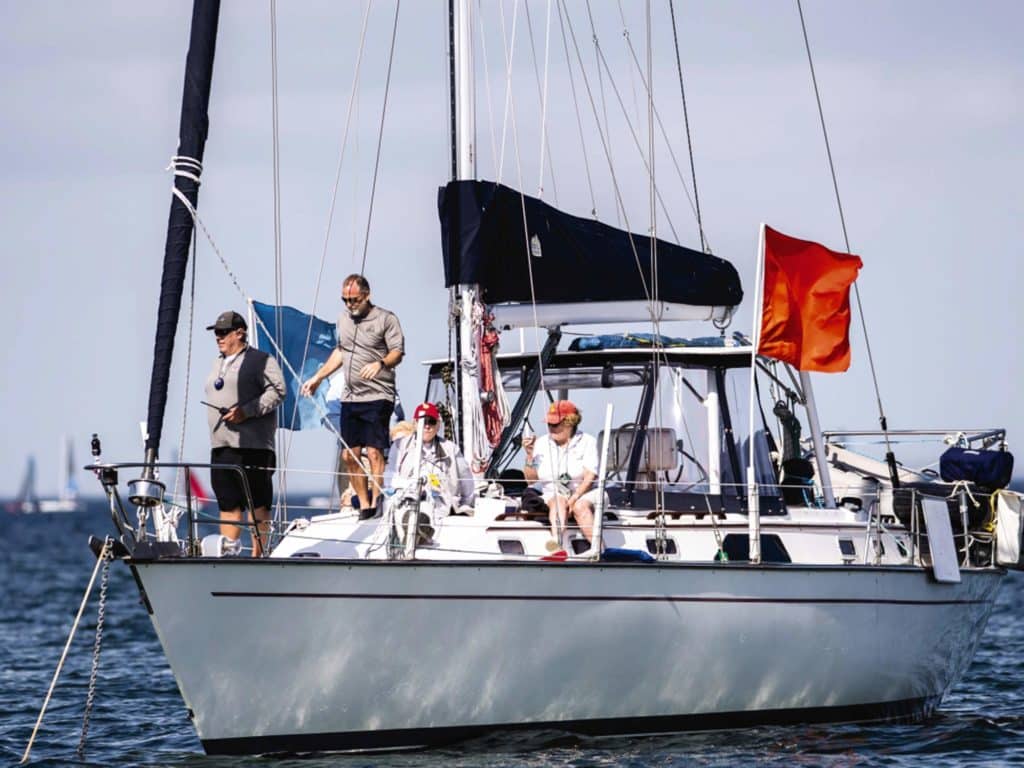
Adequate insurance coverage is an essential part of our lives. Boats, homes, automobiles, health, art collections and businesses should be properly covered, and the same is true for individuals who manage our sport, especially races officials, instructors and coaches training our youth sailors and adults on the water every day. For many years, US Sailing carried an insurance policy that provided coverage for race officials and sailing instructors, but recent accidents and subsequent settlements are prompting many of our institutions and race officials to look more carefully at their coverage and exposure.
Previously, US Sailing’s basic policy provided up to $1 million in coverage per incident and up to $20 million in excess coverage. Insurance for a large portion of American yacht clubs has been provided by Chubb Limited and the Gowrie Group, an insurance agency headquartered in Westbrook, Connecticut. The partnership has been working well to appropriately cover claims for fires, floods, fatalities and injuries over the years, but an incident in November 2020 is having a major impact on how insurance policies are written and who can receive coverage.
The accident, now well-documented, occurred during a sailing practice in Optimists hosted by Florida’s Sarasota Youth Sailing Inc. The sailor, 10-year-old Ethan Isaacs, was killed by the propeller of a coach boat. A US Sailing-certified 18-year-old instructor was running the practice session near Ken Thompson Park on Sarasota Bay when, according to an incident report published in the Sarasota Herald-Tribune, he “reportedly lost his footing and fell, putting the vessel in gear. He was thrown from the boat that continued forward unmanned, striking several 8-foot sailboats in a SYS Green Fleet practice. Two sailors had minor injuries, and Isaacs died as a result of his injuries at Sarasota Memorial Hospital.”
Carter Gowrie, managing director of the Gowrie Group, says Chubb promptly paid the $1 million claim, which was the policy limit. “The attorney for the parents went looking for another pocket and found that US Sailing covers named insured that are certified instructors,” Gowrie adds. “So, they came straight to US Sailing.”
Chubb then paid $12 million for the claim without going to court, Gowrie says.
Andrew Clouston, senior vice president of programs and services at US Sailing, says that after the incident in Sarasota, Chubb realized it needed to clarify its coverage. “The $12 million settlement that came out of our policy wasn’t a judgment—it was a settlement,” Clouston says. “Chubb felt it was better to settle with the family.”
There have been other sailing accidents over the past decade that resulted in fatalities. One accident took place in Annapolis, Maryland, in June 2011 when 15-year-old sailor Olivia Constants drowned after her 420 capsized. An in-depth review panel investigated the incident and made recommendations that resulted in better trapeze equipment for boats, as well as improved procedures for instructors and yacht clubs when accidents happen on the water. The Constants family did not pursue an insurance claim.
An accident similar to the fatality of Ethan Isaacs took place in July 2017 at the Centerport YC on Long Island, New York, when a propeller of an instructor’s boat ran over 12-year-old Ryan Weiss. A Suffolk County police officer, Sargent James Scimone, investigated the accident and reported: “We’re investigating this strictly as an accident. Nobody is at fault. The instructor is a young instructor, and he was doing everything he was taught to do.”
Chubb settled a claim by the Weiss family for $880,000, and the family encouraged elected officials to introduce a requirement, called “Ryan’s Law,” for propeller guards on boats used to instruct children. The Suffolk County New York Legislature passed the bill in July 2018 requiring that an encasement or cage surround the propeller of a boat being used for instructional sailing courses.
The Isaacs family has proposed different legislation in Florida. Their proposal, published by the Schrier Law Group, is “to require the operators of support boats under 26 feet to wear a device that automatically shuts off the engine if the operator is thrown overboard.” The Schrier paper points out that seven states have similar laws in place. Florida State Rep. Fiona McFarland introduced “Ethan’s Law” in 2021, and the bill is progressing through the Florida State Legislature at this writing, having received unanimous approval to move forward at the committee level.
After the Isaacs family settlement, Chubb clarified that its coverage only applied to race officials and sailing instructors participating specifically in US Sailing Championships, US Sailing events or US Sailing courses.
“In the new form, if a volunteer or employee of a yacht club is working at a regatta, that person is covered by the yacht club’s policy, but not by US Sailing’s policy,” Gowrie says. “The Burgee Program provides coverage for employees and volunteer race officials.”
When asked if independent sailing instructors should have their own insurance policies, Gowrie was forthright: “The instructor should get his or her own insurance. You can’t really rely on other entities to protect you for a liability situation. If you are serious about being a professional coach like that, [then you should] start an LLC and buy your own insurance.”
More than 1,300 organizations across the United States are protected by the Burgee Program, Clouston says, and it “protects not only the organization, but also the board members, flag officers, volunteers and employees.” It is designed for sailing organizations and managed by the Gowrie Group, underwritten by Chubb, and endorsed by US Sailing.
Clouston believes, however, that there should be different levels of insurance depending on who is insured: “The risk is higher for an instructor in a chase boat compared to a judge in a hearing room,” he says. “We are looking at different options for different risk profiles.”
Clouston recommends all yacht clubs and sailing organizations review their policies carefully. “It’s important that clubs pull out their policies and have a good look at them,” he says. “In Sarasota, they had a $1 million policy and no umbrella coverage, and clearly, that wasn’t enough. A race official needs to make sure the club organizing authority has adequate insurance so the race official doesn’t need his own umbrella. If a yacht club is in the Burgee Program, they have good coverage that includes race officials and instructors.”
The Isaacs family settlement has prompted Chubb to put a spotlight on some of the language in policies that were negotiated 20 years ago, Gowrie says. Consequently, Clouston makes an important recommendation for all sailing organizations: “They should look to see that their primary insurance is in place. Those conversations are happening all over the country now, which is a good thing.”
Insurance is an important part of our daily lives, including sports. And while we’re in proliferating litigation, it is the responsibility of US Sailing, yacht-club leaders, boat owners, race officials, sailing instructors and, in fact, all sailors to review their insurance policies. The basic concept of insurance is to spread the risk of loss, and everyone is in this cause together. Higher premiums could jeopardize participation in sailing, so we need to continue to ensure the sport is as safe as it can be. Gowrie says his company provides extensive safety information for yacht clubs, which is available upon request, and this renewed focus on insurance is a good reminder for us all to take the proper steps to help keep people protected and safe on and off the water.









